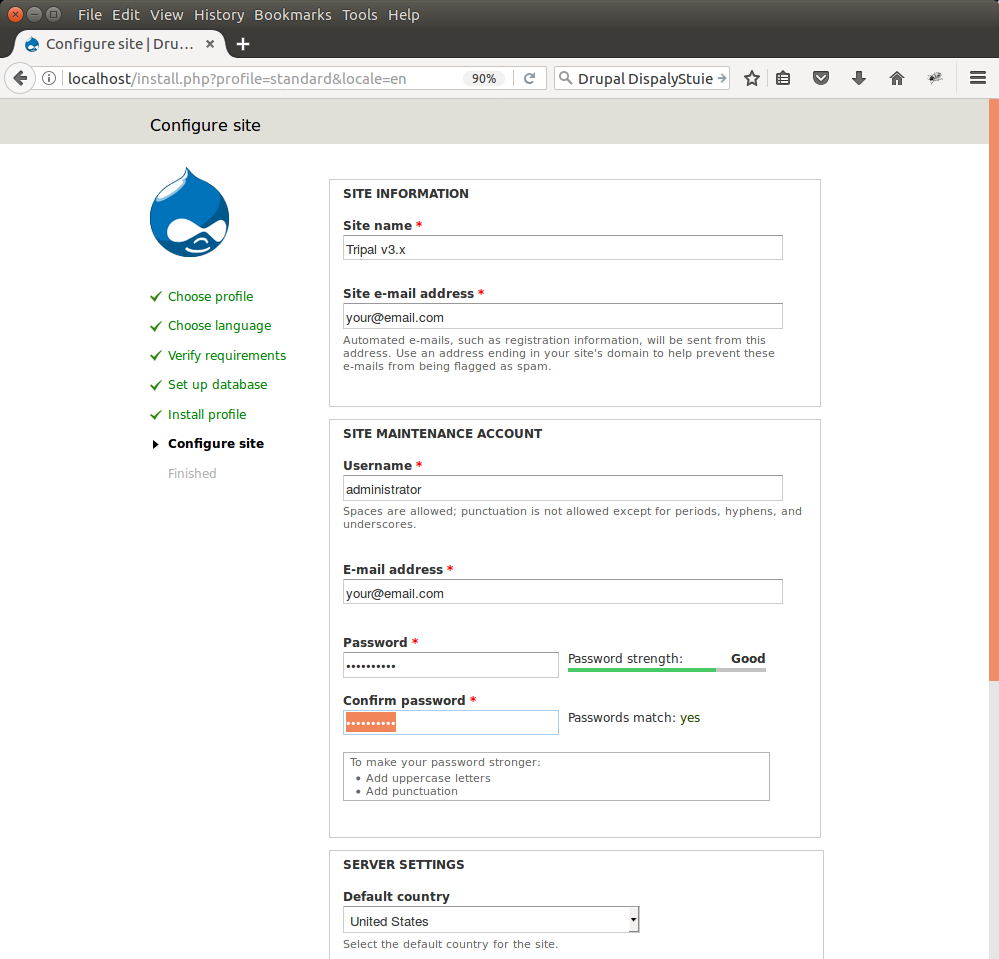
- DRUPAL INSTALL MODULE HOW TO
- DRUPAL INSTALL MODULE ARCHIVE
- DRUPAL INSTALL MODULE ZIP
- DRUPAL INSTALL MODULE DOWNLOAD
The Drupal Connector can generate dynamic HTML context for the nodes you submit for translation. Just find the tasks under the Smartling module and select edit from the Operations menu next to the task you want to update. You can change the schedule at Menu > Configuration > System > Cron. By default, the Connector module checks translation status in Smartling every hour. Select which fields you want to translate for each content type.
 In the Nodes tab, set the Translation Type for each content type to Nodes method, unless you have specifically configured Field translation via the Drupal API. Automatically authorize content for translation in Smartling - if checked, when you submit translations, content will automatically be authorized instead of being added to your Awaiting Authorization queue.Ĭlicking Test connection makes a request to the Smartling API and validates the Project ID, User ID, Token Secret, and Target locales and saves all settings. For this to work, your instance must be publicly addressable.
In the Nodes tab, set the Translation Type for each content type to Nodes method, unless you have specifically configured Field translation via the Drupal API. Automatically authorize content for translation in Smartling - if checked, when you submit translations, content will automatically be authorized instead of being added to your Awaiting Authorization queue.Ĭlicking Test connection makes a request to the Smartling API and validates the Project ID, User ID, Token Secret, and Target locales and saves all settings. For this to work, your instance must be publicly addressable. DRUPAL INSTALL MODULE DOWNLOAD
You can have Smartling send a callback to your Drupal instance to download translated items as soon as they become available, rather than waiting for the scheduled download process to pick them up. That locale must be enabled by your Smartling project. Click the Target Locales you want to translate with Smartling and enter the Smartling locale code. Enter your Smartling Project ID, user ID, and token secret into the appropriate fields on the connector settings page. Go to Smartling Dashboard > Project Settings > API and make note of the Project ID. Login to Drupal as an Administrator and browse to Menu > Configuration > Regional and language > Smartling settings. 
This parameter is also important for context, if that's being used. (By default cron doesn't know the URL of a site, and so it's empty). However, some settings are still important, for example, if you want to use "Translation callback", you need to specify the -uri parameter, otherwise it won't work. If a site is currently set up to run cron periodically, there is no additional cron-related server configurations that's required in order for the Smartling Connector module to work.
Navigate to the Modules list page at Menu > Modules. 
To verify the Drupal CMS Connector installation:
Click Install and Drupal installs the module in the sites/all/modules folder. DRUPAL INSTALL MODULE ZIP
Upload the Smartling CMS Connector module zip archive. Login to Drupal as an Administrator and browse to Menu > Modules > Install new module. To upload the Drupal CMS Connector module via the Drupal interface: It's important to set the -uri parameter correctly, or your callbacks won't work. */15 * * * * drush -root= -uri= cron -quiet &> /dev/null DRUPAL INSTALL MODULE HOW TO
For more information on how to configure cron, see Configuring cron jobs using the cron command. The module adds three locales and creates 10 nodes with content. Optionally, you can install the module with demo content.Browse to the root folder of the Drupal site.
DRUPAL INSTALL MODULE ARCHIVE
zip archive to the root folder of the Drupal site.
Copy the Smartling CMS Connector module. For more information, see How to Install Drush. To upload the Drupal CMS Connector module manually: Once we did that we created the blocks with settings for region in which we want place the block and then set the visibility for block.You can either install the Connector manually, using Drush, or via the Drupal interface. Firstly we have created the block with Type and some info and added the body for block. We have implemented the hook_install which we used to add in modules. 'visibility' => array('request_path' => array('id' => 'request_path', 'pages' => '/demopage')), 
$block_content->set('body', 'This is demo block for drupal 8') Use Drupal\block_content\Entity\BlockContent








 0 kommentar(er)
0 kommentar(er)
